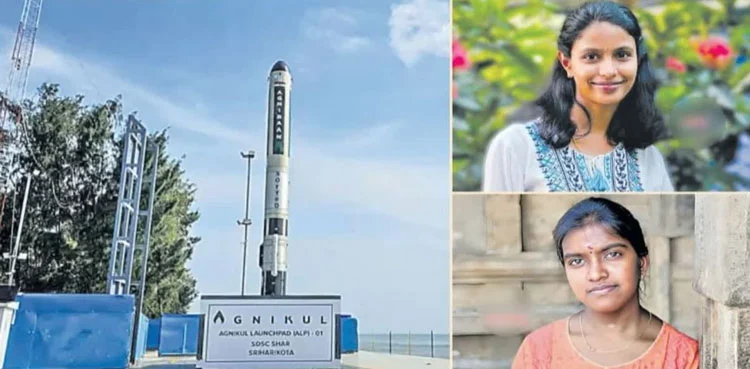In a groundbreaking feat, two Indian women scientists have successfully developed and launched the world’s first 3D printed rocket, named Agniban. On May 30, the rocket was launched from Sriharikota, marking a significant milestone in the field of space exploration. The project, spearheaded by Umamaheshwari and Saranya Periaswamy, has the potential to drastically reduce the cost and time required for future space missions.
Revolutionary Technology
The Agniban rocket, developed by Agnicol Cosmos, represents a pioneering advancement in aerospace technology. By leveraging 3D printing, the manufacturing process of rockets has been revolutionized. This technology allows for the creation of complex structures with a high degree of precision and significantly shorter production times. Traditionally, rockets take about twelve weeks to manufacture, but with 3D printing, this time is reduced to just 75 hours. Moreover, the cost of production is cut by an impressive 60%.
Leadership and Vision
Umamaheshwari and Saranya Periaswamy have played crucial roles in this innovative project. As the mission’s project director, Umamaheshwari has overseen the development and launch of Agniban. She holds a B.Tech degree in Aeronautics from the Madras Institute of Technology and has trained at the Defense Research and Development Laboratory. Her expertise and leadership have been instrumental in bringing this project to fruition.
Saranya Periaswamy, another key figure in the project, highlighted the broader implications of 3D printing technology. In an interview with Indian media, she emphasized that 3D printing has already brought revolutionary changes to various fields, including medicine, construction, and fashion. The success of Agniban further underscores the transformative potential of this technology in aerospace.
Technical Innovations
Agniban’s design incorporates a semi-cryogenic engine, which uses liquid oxygen and kerosene instead of the more commonly used, but heavier, hydrogen. This choice of propellants is part of what makes the rocket both innovative and efficient. The use of 3D printing in the construction of the rocket allows for a more streamlined production process, enabling faster assembly and reduced costs without compromising on performance or safety.
Impact on Future Space Missions
The successful launch of Agniban demonstrates the viability of 3D printed rockets and paves the way for their broader adoption in future space missions. This technology can make space exploration more accessible and cost-effective, potentially leading to an increase in the number of missions and a faster pace of technological advancement.
Umamaheshwari expressed her satisfaction with the successful launch, stating, “I am very happy to know that our rocket has reached its destination after traveling 700 km. This will empower us to do better in the future.” Her words reflect the optimism and determination driving this project and signal the beginning of a new era in space exploration.
Broader Implications
The success of the Agniban project not only highlights the capabilities of 3D printing in rocket manufacturing but also showcases the significant contributions of women in the field of science and technology. The achievements of Umamaheshwari and Saranya Periaswamy serve as an inspiration to aspiring scientists and engineers, particularly women, demonstrating that with innovation and determination, they can make groundbreaking advancements in traditionally male-dominated fields.
The launch of the world’s first 3D printed rocket by Indian women scientists Umamaheshwari and Saranya Periaswamy is a testament to the power of innovation and the transformative potential of new technologies. As this technology continues to evolve, it promises to make space exploration more efficient and accessible, heralding a new era of rapid advancements and discoveries. The success of Agniban is not just a milestone for the team at Agnicol Cosmos but a significant leap forward for the global aerospace industry.



